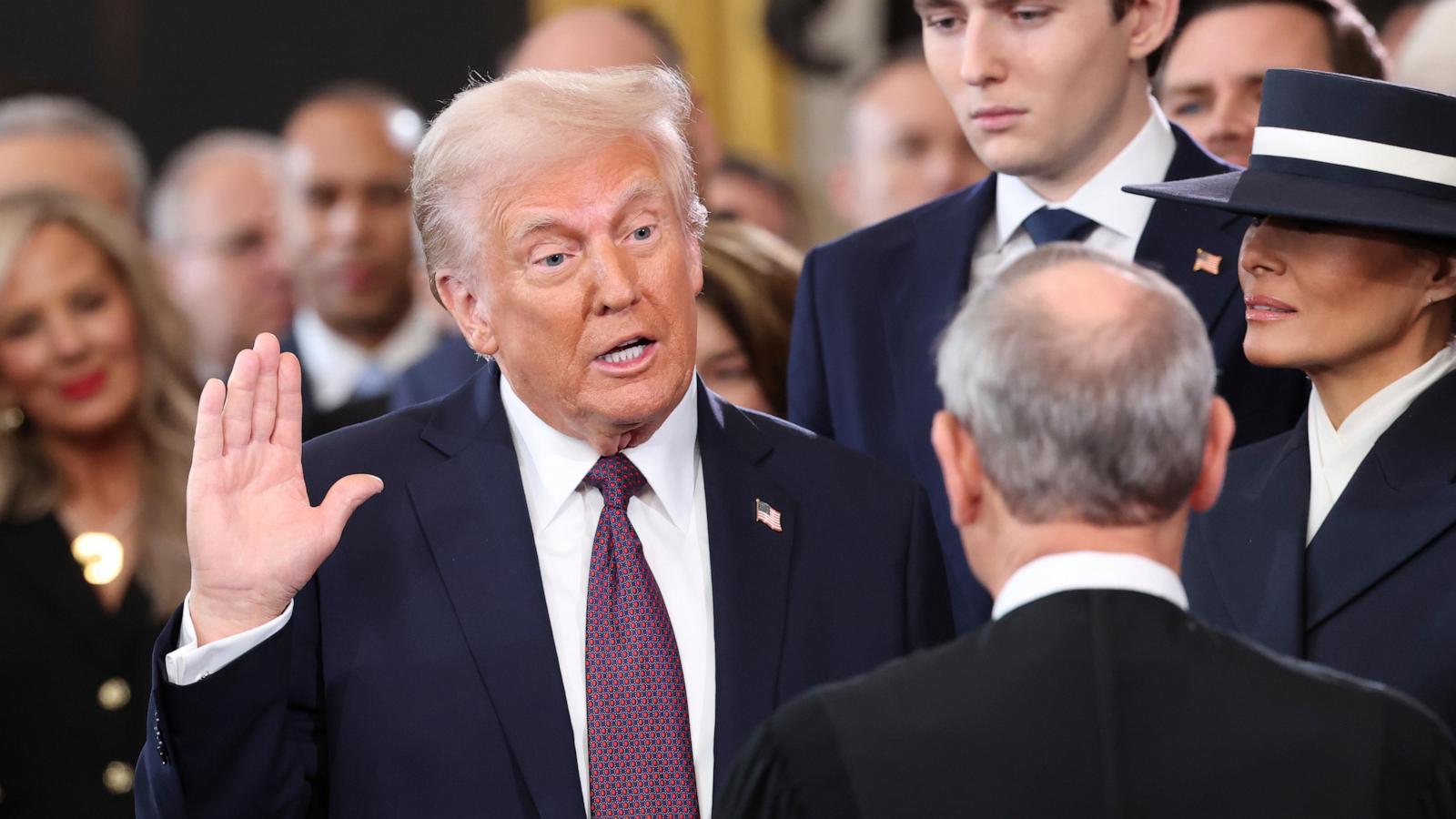Trump's Second Inauguration: A Record Low in Viewership?
Hold onto your hats, folks, because the numbers are in, and they're shocking! President Donald Trump's second inauguration ceremony saw a dramatic drop in television viewership, making it the least-watched inauguration since 2013. Did the shorter ceremony time affect the numbers, or is there more to the story than meets the eye? We delve into the surprising details and explore the factors behind this historic decline. Let's uncover the truth!
Viewership Numbers: A Steep Decline
The Nielsen Company released data revealing that approximately 24.6 million viewers tuned in to watch President Trump's second inauguration. This figure marks a significant decrease compared to previous inaugurations. In 2017, his first inauguration attracted 30.6 million viewers. Meanwhile, President Biden's inauguration in 2021 drew a staggering 33.8 million viewers. Even the second inauguration of President George W. Bush in 2004 surpassed these recent numbers, attracting a viewership of 15.5 million, suggesting the long duration of the Trump event possibly caused the numbers to drop as the day wore on.
Comparing Viewership Across Administrations
The differences in viewership across different presidential inaugurations are quite stark. Looking back at historical data, we see that the numbers have varied considerably over the years. President Ronald Reagan's 1981 inauguration, for example, drew an impressive 41.8 million viewers, showcasing the broad interest and anticipation around significant political events.
Factors Influencing Viewership: Beyond Politics
Several factors could contribute to the lower viewership figures for Trump's second inauguration. The lengthy coverage spanning several hours, from 10:30 a.m. to 7:30 p.m. Eastern Time, is something experts think significantly impacted total viewer numbers. People often only watch inauguration ceremonies for an hour or two.
The Role of Extended Coverage
This extended broadcasting duration means many viewers might have turned away earlier in the day than previous inaugurations, causing a skew in the reported total number of views. Experts hypothesize the difference in audience may simply stem from how viewership averages were computed for prior years, versus the current year.
Network Breakdown: Where Viewers Tuned In
While the overall viewership was lower, network-specific data provides an interesting snapshot. Fox News Channel significantly dominated viewership during the time Trump was sworn in. It pulled in 10.3 million viewers, whereas ABC, NBC, CBS, CNN, and MSNBC reported noticeably fewer viewers during the ceremony, indicating a strong partisan divide. In contrast, 2021 saw much higher numbers on CNN and MSNBC.
Partisan Divide and Cable News Influence
The substantial disparity between different news channels highlights a clear partisan divide among viewers. This stark contrast between how various news sources performed further emphasizes how the partisan divide in the nation plays a huge role in shaping how viewers consume events.
Conclusion: What It All Means
The significantly reduced viewership for Trump's second inauguration raises compelling questions. Was it the longer-than-usual broadcast, or did other factors play a bigger role? Did a decline in interest towards political events also factor in? While conclusive answers may require deeper analysis, the considerable difference compared to prior inaugurations can't be ignored.
Further Considerations
The fact that viewership has historically fluctuated across different presidential inaugurations underscores how many varying elements impact the numbers. Future research might focus on audience demographics and engagement to build a more comprehensive view of what shapes such numbers.
Take Away Points:
- Trump's second inauguration had the lowest viewership since 2013.
- Extended coverage might have caused viewer drop-off.
- Fox News dominated viewership compared to other networks, suggesting a strong partisan divide.
- Understanding viewership requires considering broadcast duration and viewers’ partisan preferences.




